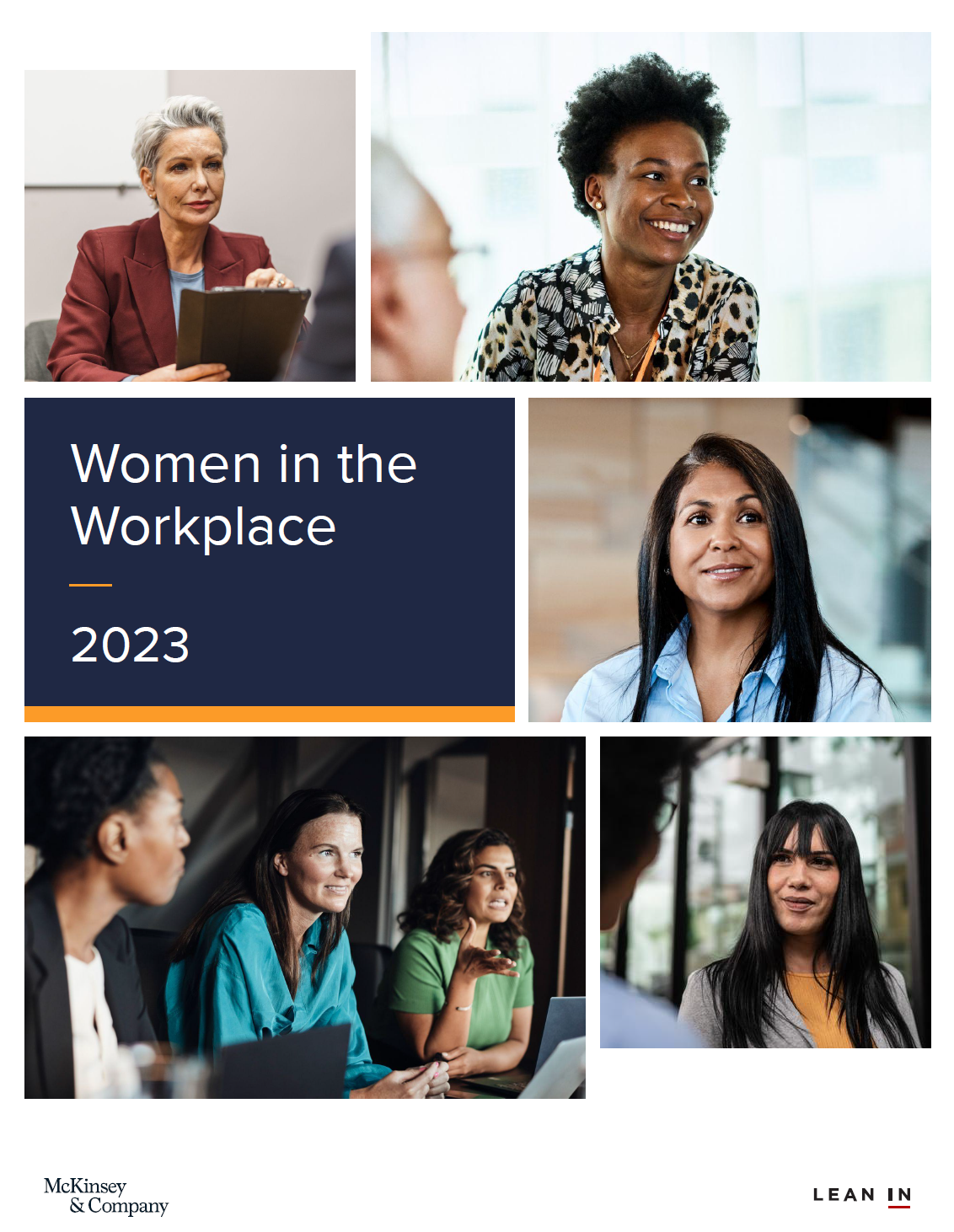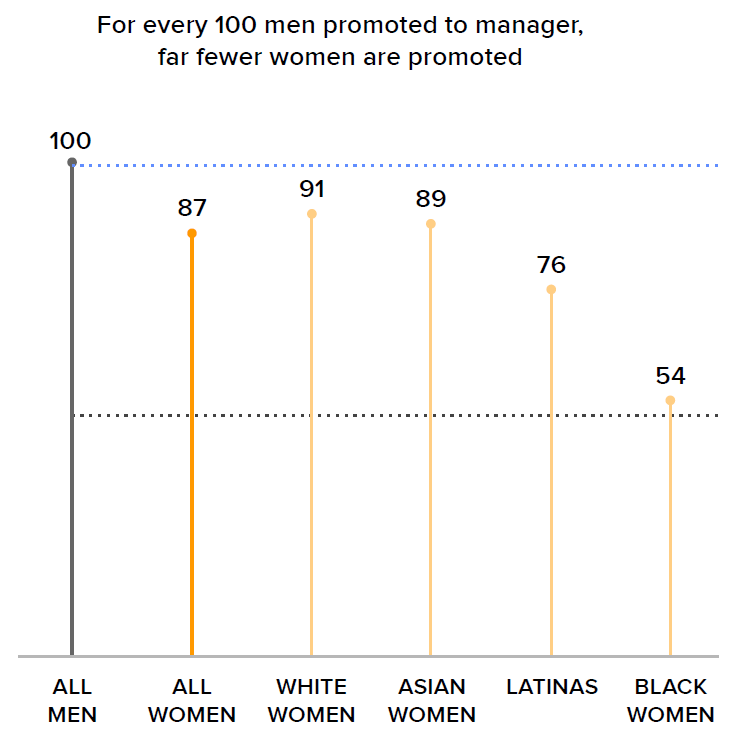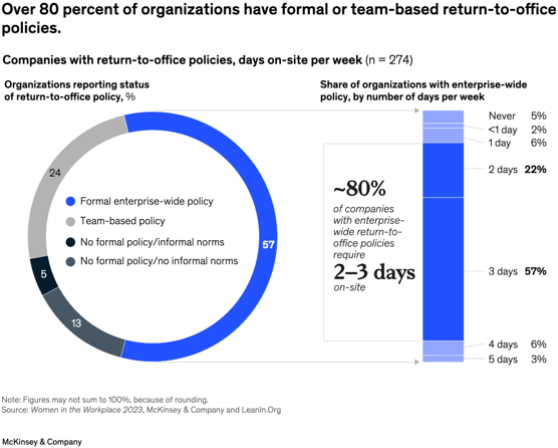Women in the Workplace 2023 Study: What Caught Our Attention
- Filed under "equality"
- Published Thursday, October 26, 2023
- « back to articles

In 2015, McKinsey and Company and LeanIn.org launched its Women in the Workplace 2023 study on the state of corporate America’s working women. Since then, the annual study has included input from over 900 companies and 450,000 people, and in 2023, over 27,000 respondents from 276 companies took part.
The 2023 study sets out to debunk prevailing myths about women’s experiences in the workplace and in career advancement – many of these myths persist from years past, and many have been exacerbated by the shift to flexible work environments. Intent of this data is to encourage corporate employers to improve policies and practices to improve women’s progress.

Although senior leadership for women has increased, progress for women of color lags: 1 in 4 corporate leaders are women, but only 1 in 16 are women of color, and only 1% of corporate executives are Latina. Here are the four persistent myths the research notes about women at work:
MYTH 1: Women are becoming less ambitious.
REALITY: Women are more ambitious than before the pandemic, and work flexibility is the primary reason.
One in 5 women report that flexibility has helped them stay in their job or avoid reducing hours, many women who work remotely pr hybrid report less fatigue and burnout, and most women report having more focused time to complete their work when working remotely. The pandemic also helped women understand that balance of work and life is possible without a cost to career growth.

MYTH: The “glass ceiling” is the biggest barrier to women’s advancement.
REALITY: The “broken rung” (early promotion opportunity) is the greatest obstacle women face in their trek to senior leadership.
For every 100 men promoted from entry level to management, 87 women were promoted, and the trend for women of color is trending down. This “broken rung” has several drivers, but these 3 things are important to remember:
- Women are not responsible for this. Outdated notions that women are more likely to step down from work, or women aren’t asking for promotions are not true.
- Bias continues to be a barrier, and the old maxim that women are hired and promoted based on past accomplishments and men are hired based on future potential is wrong and potentially challenging.
- Until this broken rung is repaired, fewer women will reach higher levels in the corporate world.
MYTH: Microaggressions have a “micro” impact.
REALITY: Microaggressions have a large and long-term impact on women.
Microaggressions (demeaning or dismissive comments and actions) directed at another because of their gender, race, or other aspects of their identity) are a significant workplace hazard that women are twice as likely than men to face. In this situation, women are less likely to feel safe and more often don’t propose new ideas or speak up due to anticipated backlash. They are 3 times more likely to quit a job and 4 times more likely to report being burned out.
MYTH: it’s mostly women who want and benefit from flexible work.
REALITY: Both women and men see flexibility as a “top 3” employee benefit and critical to their company’s success.
“Flexibility,” including remote or hybrid work and flexible work options, such as the ability to set your own hours, is second only to healthcare benefits as the most-desired employee benefit. Both women and men also note the many stress-reducing advantages of remote work, such as fewer unpleasant interactions with coworkers and reduced fatigue and burnout. One disadvantage to women working remotely, however, is that men are more likely to be “in the know,” receive mentoring they need, and have their accomplishments noticed and rewarded when they work on-site.
The report concludes with several recommendations for companies working to position women in leadership, including:
- Tracking outcomes for women’s representation and use data to repair problems.
- Empowering managers to be effective people leaders and equip managers with the skills they need to be successful.
- Taking steps to eliminate microaggression.
- Support and optimize flexibility while ensuring a level playing field across work arrangements.
- Repair the “broken rung” for women, particularly women of color, such as mentoring and sponsorship programs.
The chart below indicates the status of businesses in formalizing return-to-office policies, which the majority requiring 2-3 in-office days per week across the board. This is encouraging, considering the change in perspective from pre-pandemic policies. And although top-performing companies, particularly those with high women’s representation, are adopting practices intended to attract and retain women, roughly 40% still do not offer childcare reimbursements or career development programs focused on women of color.

As we continue to advocate for the success of girls and women, information of this type helps support our messaging to constituents, including corporate and business leaders. Please share this with others who may wish to learn more.